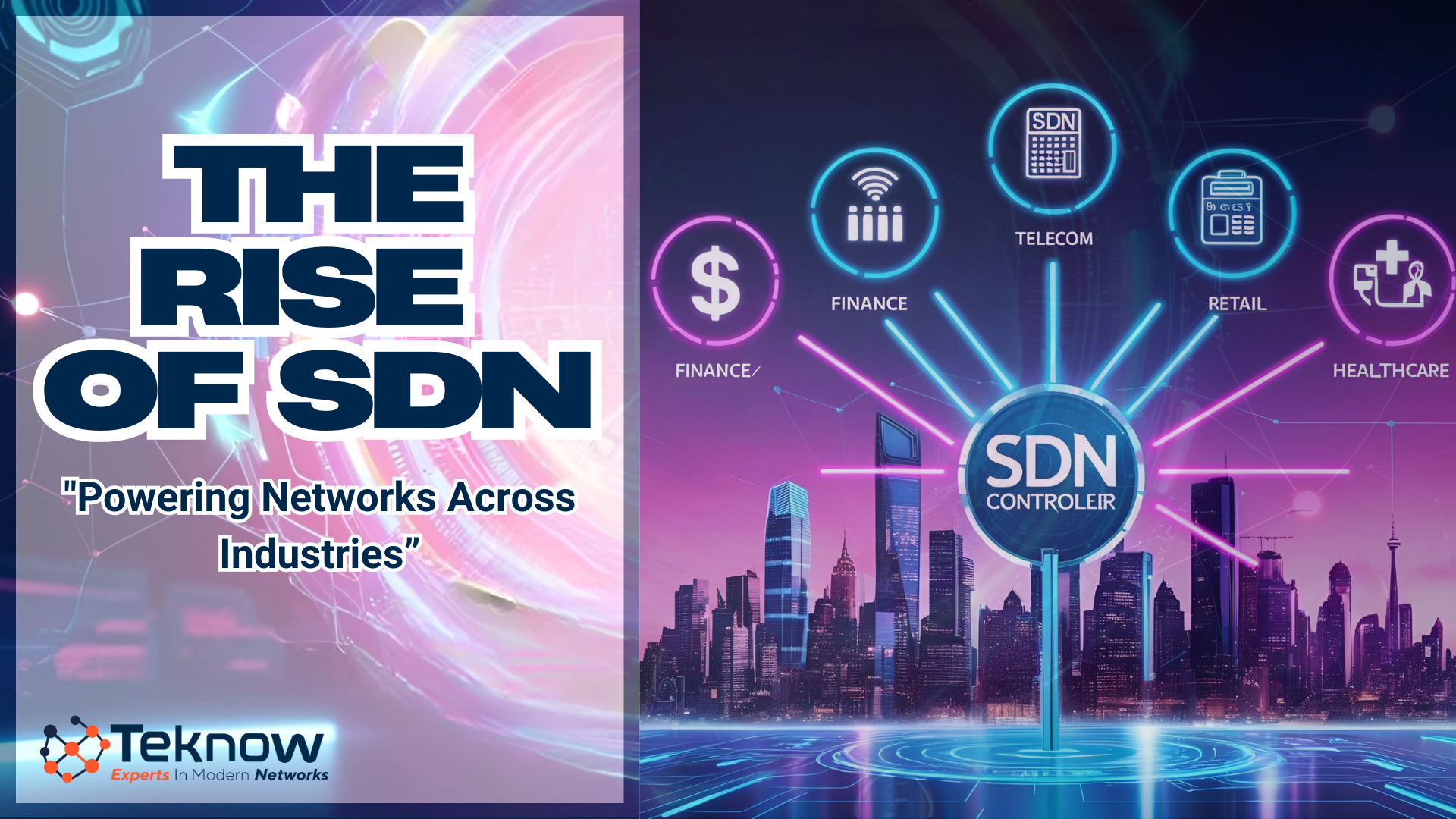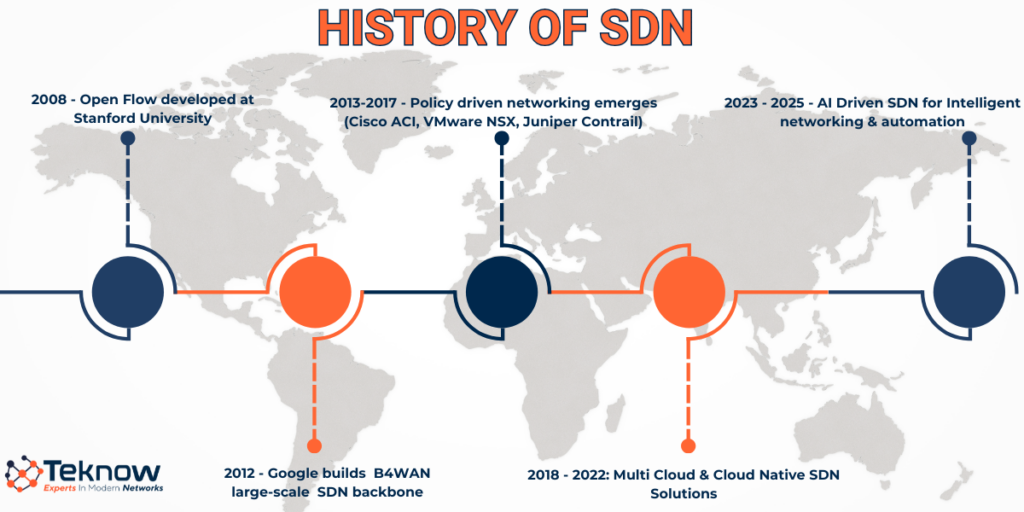
Have you ever wondered how we went from manual network configurations to managing entire global infrastructures with just a few clicks?
That shift is thanks to Software-Defined Networking (SDN)—and it’s one of the biggest evolutions in enterprise IT.
From its academic roots to industry-wide adoption, SDN has quietly transformed the way businesses design, deploy, and manage their networks. And today, it’s no longer just a “nice-to-have”—it’s foundational.

How SDN Has Evolved Over the Years
SDN began in the halls of Stanford University in the late 2000s, where researchers wanted to create programmable networks that could adapt in real time. The development of OpenFlow (a protocol to control network switches from a central controller) laid the groundwork.
By 2011, big names like Google, Facebook, and Microsoft were already investing in SDN to scale their data centers and cloud environments more efficiently.
Since then, SDN has moved from experimental to essential.
Where SDN Is Used in Today’s Network Stack
SDN is no longer a single product—it’s an approach that touches nearly every part of the modern network. Let’s break it down:
1. SD-WAN (Software-Defined WAN)
SD-WAN applies SDN principles to wide-area networks, enabling centralised control, intelligent traffic routing, and security at the edge.
Popular in:
2. SDDC (Software-Defined Data Centre)
The entire data centre—compute, storage, and network—is virtualised and centrally managed through SDN. Policies, segmentation, and automation are applied consistently across workloads.
Popular in:
3. SD-Access (Campus Networks)
SDN simplifies access networks in campuses or enterprise HQs. It enables segmentation, identity-based access, and analytics from a central dashboard.
Popular in:
SD-Branch
A unified SDN-based solution for remote branches that combines networking, security, and WAN optimisation—all manageable from the cloud.
Popular in:
Public Cloud (Cloud SDN)
Major cloud providers have adopted SDN to offer scalable, programmable virtual networks as a service.
Examples:
6. Hybrid and Multi-Cloud
Enterprises are now using SDN to create seamless, policy-driven interconnectivity across cloud and on-prem environments.
Popular in:
7. Telecom & Service Providers
SDN enables 5G, network slicing, and NFV (Network Function Virtualization)—a game-changer for service delivery and infrastructure agility.
Adopted by:
Which Industries Are Adopting SDN?
SDN isn’t limited to a single vertical. Its flexibility and automation make it attractive to nearly every industry:
The Bottom Line
SDN has evolved far beyond its academic beginnings. Today, it’s a proven approach that’s enabling automation, visibility, and agility across almost every part of the enterprise network.
Whether you’re looking to:
SDN is the foundation.
Final Thoughts
The rise of SDN isn’t just about better networking—it’s about unlocking business agility.
At Teknow, we help businesses design, build, and secure SDN-driven networks—from strategy to implementation. If you’re exploring how SDN fits into your roadmap, let’s talk.
#SDN #SoftwareDefinedNetworking #NetworkTransformation #SDWAN #SDDC #SDBranch #SDAccess #CloudNetworking #HybridCloud #MultiCloud #Telecom #DigitalInfrastructure #Teknow #ITLeadership